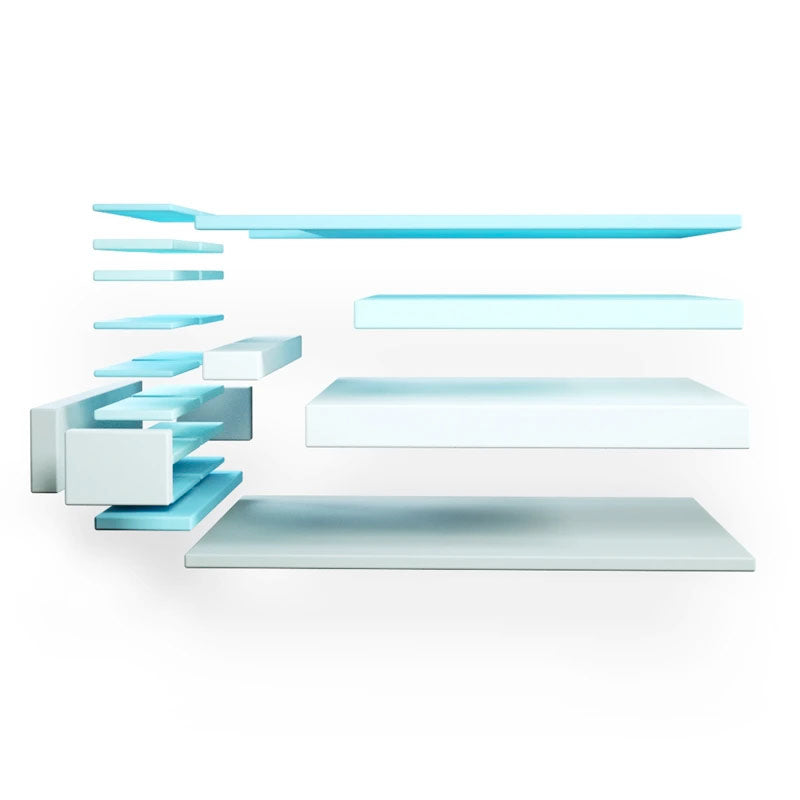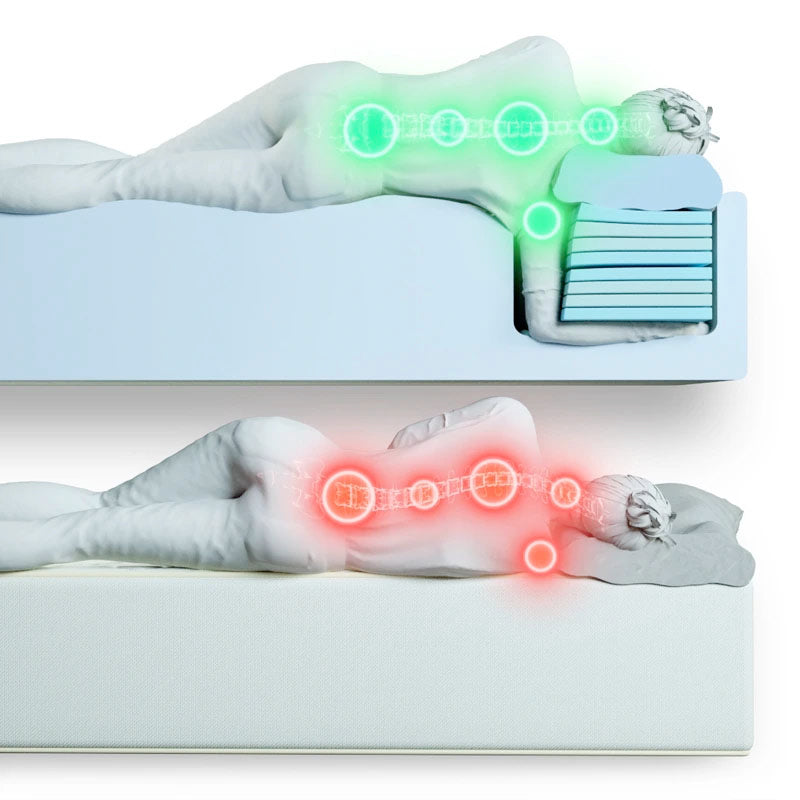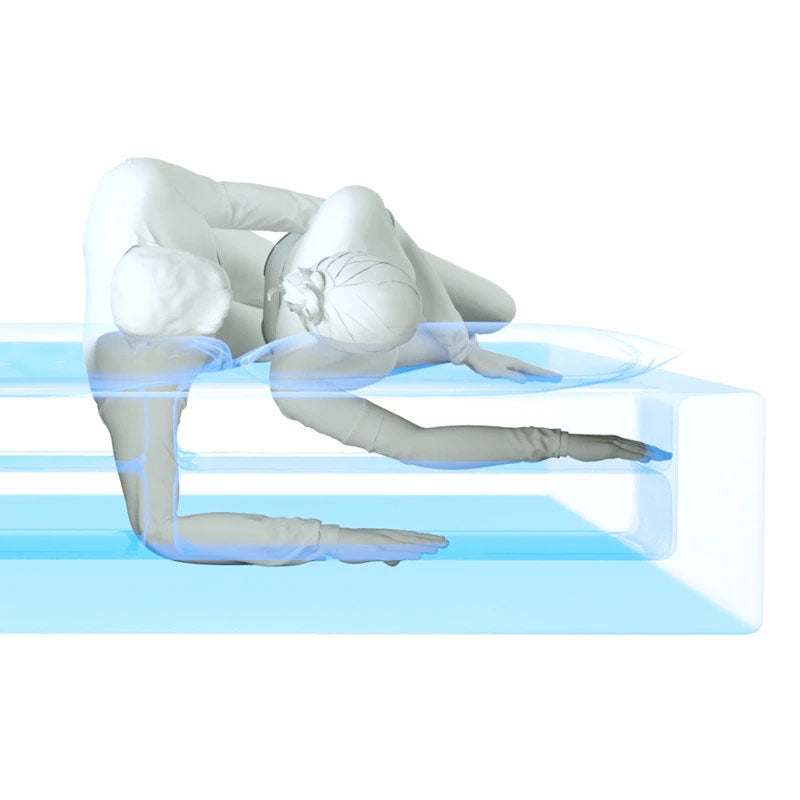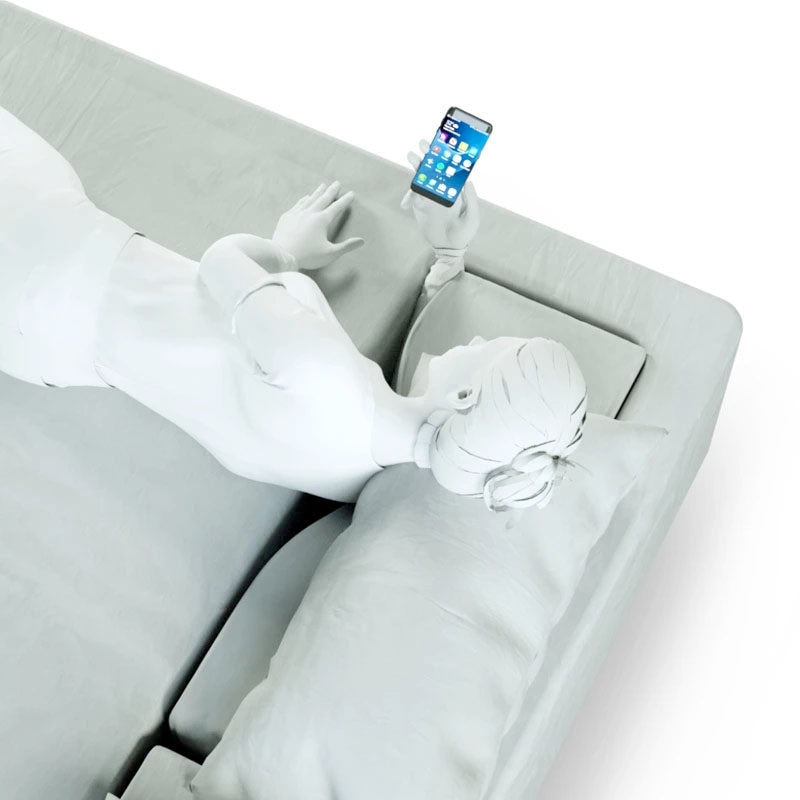Do you enjoy falling asleep to quiet, gentle sounds? Are you someone who turns on a fan at bedtime so the sound can lull you to sleep?
If you answered “yes” to either of those questions, you are part of a wide group of people who enjoy listening to white or pink noise to help them sleep. You’re probably wondering what the difference is between the two.
Today, we’ll define white and pink noise, describe how they can help you rest, and explain how SONU can help you get a better night’s sleep if white noise just isn’t for you.
What Is Frequency?
Before we begin, we want to define the key term used to measure noise levels: frequency.
Frequency measures how many waves pass a fixed place within a predetermined amount of time. It can also be used to count the vibrations or cycles that a body performs in periodic motion.
Frequency is measured in hertz (Hz), a.k.a. cycles per second. Frequency measures electrical signals of various types. It can be used to measure power systems and, in the case of pink noise and white noise, sound waves.
Frequency is measured with a frequency meter.
What Is Pink Noise?
Pink noise is sound that pairs lower volumes with higher frequencies. An example of pink noise is the soothing sound of ocean waves.
We encounter plenty of pink noise in nature. The rustling of leaves, beat of steady rain, or gust of wind are all examples of pink noise.
What Are the Benefits of Pink Noise?
Pink noise may improve memory in elderly adults, and listening to acoustic pink noise while sleeping has been shown to improve word recollection ability in adults between 60 and 84 years of age.
Pink noise has also been proven to improve sleep quality. Light music, a type of pink noise, helps elderly people improve their sleep in the long term.
Pink noise can also help lower the complex levels of brain activity. A steady stream of pink noise can promote stable sleep time, resulting in higher sleep quality. It can also lead to deep sleep.
That said, if you have a hard time falling asleep with any form of noise, the SONU Sleep System can still help you enter deep sleep so you can wake up feeling refreshed. Featuring an immersive Comfort Channel, Support Pillows, and sink-in support, SONU can help you enjoy an unforgettable sleep experience.
Who Should Try Pink Noise?
Pink noise is great for elderly adults with memory issues or people who wish to experience deeper sleep.
It may also benefit those who:
- Are dealing with a bad mood.
- Need motivation.
- Need help focusing.
- Experience brain fog.
What Is White Noise?
White noise includes equal levels of all frequencies. It has been shown to make people fall asleep quickly and stay asleep.
If you grew up with analog television, you’re familiar with white noise. Think of those times when you’d flip through channels, and in between those channels, “snow” would appear on the screen accompanied by a crackling sound. This “snow” is actually television static — a form of white noise.
White noise is often used to block out disruptive noises, like traffic or slamming doors.
Some popular types of white noise include the sound of a whirring fan or a humming air conditioner. White noise machines, which are frequently used in offices, are also available for purchase.
That said, white noise may feel jarring to sensitive ears due to its higher frequencies.
What Are the Benefits of White Noise?
Hospitals may use white noise to drown out noises that could disturb patients. One experiment found that white noise helped patients admitted to the coronary care unit sleep better. Sleep is important for patients’ recovery; it moderates physiological functioning and conditions related to the cardiovascular system.
White noise also improves memory by boosting midbrain activity connected to dopamine, attention, and learning.
It can even help older adults suffering from dementia. Elderly people with dementia can often exhibit flustered behavior, and exposing them to white noise can soothe them.
White noise can help children concentrate in class. Inattentive children have a harder time keeping up with their classmates and are often disruptive, causing further stress for them, their peers, and their teachers. Calming white noise can help these students relax, pay attention, and retain what’s being taught.
If you’ve had a stressful day, listening to white noise for a few minutes can help you feel calm and refreshed.
Who Should Try White Noise?
White noise can work for just about anyone. You may want to try it if you:
- Have trouble falling asleep.
- Need help concentrating at work or school.
- Work with inattentive children.
- Care for people with dementia.
- Work or live in a noisy environment.
- Have a newborn that has trouble falling asleep.
- Practice meditation.
- Experience tinnitus.
Are There Downsides To Using Pink Noise or White Noise?
Once you start sleeping with white noise or pink noise playing, you may not be able to sleep without it.
If sleeping with sound playing is part of your bedtime ritual, you could become very anxious if you are in a situation where you cannot play the sound for whatever reason.
Maybe you’re sleeping over at someone else’s home, and you did not bring your sleep machine. As a result, you may find it difficult to fall asleep.
Another possible disadvantage of using pink or white noise is that if you listen to them at high volumes, you could damage your hearing. This is especially likely if you use headphones to listen to a calming sounds app on a device.
If you want a better night’s rest without having to risk your hearing or mental health, the SONU Sleep System can help. SONU’s mattress features a plush, top layer of serene foam for the ultimate comfort, while the four Support Pillows work to support your head and neck.
Paired with a Comfort Channel to relieve arm and shoulder pain for side sleepers and a cooling layer, the SONU Sleep System has everything you need for a good night’s sleep.
What Other Types of Noise Are There?
Some other types of noise include gray, blue, red, green, and brown noise. The one that comes up the most, next to white and pink noise, is brown noise.
Brown noise produces higher energy and lower frequencies, leading to a rumbling sound similar to bass. It was named after the Brownian motion, which focuses on the random movements of particles in liquid or gas.
Brown noise is deeper than both pink noise and white noise. Some examples of brown noise are thunder, strong waterfalls, strong winds, rushing rivers, and low roaring.
Which Type of Noise Is Best?
To figure out which type of noise is best for you, you’ll have to try them out.
Both pink noise and white noise show the ability to improve memory, and both can help you fall asleep. However, pink noise can specifically help you enter deep sleep, which is essential for cognitive functioning.
Brown noise is sometimes considered more soothing than pink or white noise, as some prefer hearing sounds at lower frequencies. Brown noise thunder might be just as popular as pink noise steady rain.
Conclusion
Pink noise and white noise are both beneficial when it comes to falling and staying asleep. However, choosing a noise to listen to while you sleep is just one part of creating a positive sleep environment. In addition to pink or white noise, you can lower the temperature in your home, use black-out curtains, or consider replacing your mattress.
If you are having problems sleeping, talk to your doctor to figure out if you have a sleep disorder. They will be able to make recommendations to address your sleep issues and hopefully get you on the path to a good night’s sleep.
SONU understands the value of sleep hygiene. The SONU Sleep System is an unconventional yet ingenious way to help customers like you get better sleep. Paired with pink or white noise, SONU’s bed can make for a perfect sleep environment.
FAQ
Are pink noise and white noise the only colors that have been studied?
No. Other noises are categorized as colors in studies by the National Institute of Health and reputable universities. These colors are brown, red, blue, gray, and green.
Are pink noise and white noise forms of ASMR?
No. Autonomous Sensory Meridian Response (ASMR) is the sensation people feel when they watch or listen to stimulating content. This content might include someone whispering, playing with keys, or scratching a surface over a microphone. ASMR is described as a “tingly” feeling.
Sources
The Best Sounds for Sleep | Sleep.org
Spectral Content (colour) of Noise Exposure Affects Work Efficiency | NIH
Effect of White Noise on Sleep in Patients Admitted to Coronary Care | NCBI
Listening to White Noise Improves Memory | Cognitive Neuroscience Society
White Noise: How How To Use It for Better Sleep | Sleep Foundation
Why Not Everyone Should Sleep with a White Noise Machine | Time
Noise Damage and Hidden Hearing Loss | Mass Eye and Ear
About Colored Noise | Columbia University
Autonomous Sensory Meridian Response (ASMR): a flow-like mental state | NIH






















